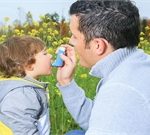(HealthDay News) — Sports such as skiing, snowboarding and ice skating can sometimes lead to sprains, dislocations and fractures. In fact, some 200,000 people are treated for winter sports-related injuries every year, says the American Academy of Orthopaedic Surgeons. To avoid hurting yourself, the academy suggests: Never engage in a winter sport alone. Keep in shape and warm up sufficiently. Wear appropriate protective gear and layers of water-resistant clothing. Check that equipment is working before use. Take lessons from a qualified instructor. Drink plenty of water before, during and after the sport. Be aware of how to get help if frostbite or hypothermia occur. Pay attention to weather updates and storm warnings. Abide by all rules of the sport.
A little about: Weekly Gravy
All Sauce from Weekly Gravy:
How to Stay Fit When You’re Traveling for Work or Fun

If you travel a lot for business or pleasure, you may think that the most exercise possible is lugging your bags in and out of a car or through an airport. But it’s important to get in real exercise even when you’re away from home. If you’re a business road-tripper, look for snippets of time to move those muscles, like when you stop for gas. Any bodyweight calisthenics will do. Think: squats. There are many varieties, but the basic is a powerhouse move. Stand with feet a little more than shoulder-width apart, arms out in front of you. Bend the knees and push your hips back, lowering your body until your thighs are below your knees if possible. And then return to standing position. Do three sets of 10. At your hotel, do planks or push-ups and some crunches. If stuck in a car or on a plane for any length of time, try isometric exercises, where you can contract your muscles without needing to move around a lot. Put the palms of your hands together and press as hard as you can. That will engage your chest muscles. Contracting your gluteal muscles can help your lower back. Remember to hold each isometric exercise for 10 seconds. Do a few sets of 10 reps each. Once you get to your destination, if you don’t have… read on >
Kids’ ‘Microbiome’ May Play Key Role in Asthma

Microbes that live in a child’s upper airway could be linked to severe asthma attacks, new research suggests. For parents, it’s an all-too familiar scene: A child’s seemingly harmless cough quickly escalates to wheezing, gasping and an urgent need for emergency treatment. Asthma is the leading chronic disease in kids and third-most common cause of hospitalization among those under 15, according to the Asthma and Allergy Foundation of America. Now, a new study found an association between asthma flare-ups in children and the makeup of the upper-airway microbiome, communities of microscopic organisms that include bacteria. “In the future, we wish to understand whether the upper-airway bacteria can play a causal role in the severity of asthma symptoms,” said study author Dr. Yanjiao Zhou, who conducted the research at Washington University School of Medicine in St. Louis. She is now an assistant professor of medicine at UConn Health in Farmington, Conn. Zhou and her colleagues collected data on 214 school-aged children who were part of a clinical trial. Participants had mild to moderate asthma that was being treated with daily inhaled corticosteroids. Nasal samples were collected twice — once when asthma was under control, and again when kids had the signs of an emerging flare-up, what the investigators called the “yellow zone.” The researchers said kids who had early warning signs of a flare-up were more… read on >
‘Shopping Addiction’ Can Cause Harm, and It’s Moved Online

The holidays are peak buying time, and perhaps the worst time of the year for people who simply can’t control their urge to shop. Now, research shows that the ease of online purchasing could be making things worse for people with so-called “buying-shopping disorder” (BSD). BSD is still debated as a stand-alone diagnosis, and hasn’t yet been included in the psychologists’ bible, the Diagnostic and Statistical Manual of Mental Disorders. But that’s probably only because not enough good data on the condition exists, said the author of a recent study into online shopping addiction. There’s a “relative lack of published scientific literature,” said Dr. Astrid Muller — but psychologists have long dealt with such cases. “There is well over 100 years of clinical history describing dysfunctional buying or acquisition excesses that interfere with daily life, and are associated with significant clinical distress and impairment in important areas of functioning,” said Muller. She’s head psychologist in the department of psychosomatic medicine and psychotherapy at Hannover Medical School in Germany. BSD is defined as an “extreme preoccupation with shopping and buying [and] to impulses to purchase that are experienced as irresistible,” Muller said. The condition can cause real harm, including post-purchase guilt and regret, a sense of loss of control, family conflict over excessive purchasing, and financial distress. According to Muller, BSD is thought to affect about… read on >
Health Tip: Preparing Your Car for Winter
(HealthDay News) — Winter storms and cold temperatures can be dangerous. But if you get your car ready for cold weather, you can have a safer winter, says the U.S. Centers for Disease Control and Prevention. The CDC suggests: Service the radiator and maintain antifreeze. Check the tread on all tires, or replace tires with all-weather or snow tires. Keep your gas tank full to avoid ice in the tank and fuel lines. Use a wintertime formula in your windshield washer. The CDC also encourages you to prepare a winter emergency kit for your vehicle. It should include blankets, food and water, compass and maps, a first-aid kit, plastic bags, car supplies and a flashlight.
Health Tip: 7 Ways to Prevent Wrinkles
(HealthDay News) — Facial wrinkles can be caused by aging, smoking and sun damage, says Cleveland Clinic. Though there are treatment options for wrinkles, it’s best to prevent them before they develop. Cleveland Clinic mentions these ways to prevent wrinkles: Apply sunscreen every day as part of your morning routine. Avoid products that are harsh on the skin. Find gentle moisturizers. Consume less sugar and refined carbohydrates. Get fresh air. Avoid environmental pollutants, such as soot and exhaust. Do your best to get six-to-eight hours of sleep each night. Include healthy fats in your diet, such as olive oil, nuts and avocado. If you smoke, quit.
Recipes for a Festive Holiday Feast

Elegant holiday dishes are surprisingly easy to pull off when you stick to only a few ingredients. Try this delicious pork loin roast flavored with fragrant dried herbs and the perfect accompaniment — apples and sweet potatoes. Roasted Pork Loin 2-pound pork loin 1/2 teaspoon salt 1/4 teaspoon freshly ground black pepper 1 tablespoon extra-virgin olive oil 1/4 cup Dijon mustard 2 teaspoons mixed herbs, such as thyme, rosemary and sage Preheat oven to 400 degrees. Sprinkle pork with salt and pepper, then brown in a large, oven-proof skillet with the oil over medium-high heat for about 4 to 5 minutes. Turn off the heat and coat with the Dijon mustard and herbs. Cover loosely with aluminum foil and bake 35 to 40 minutes. Remove from oven and allow roast to rest 8 to 10 minutes so the juices can redistribute. Slice against the grain and serve. Yield: 4 to 6 servings Apple and Sweet Potato Bake 3 large sweet potatoes, peeled and thinly sliced 3 medium apples, thinly sliced 1 medium orange, zested and juiced 1/4 cup dark brown sugar, packed 1 teaspoon pumpkin pie spice 1/4 cup walnut pieces or chopped walnuts Preheat oven to 375 degrees. In a large bowl, toss sweet potatoes, apples, orange zest and juice, sugar and spice. Transfer to a 9-by-13-inch baking dish. Cover with foil and bake… read on >
Obesity Might Skew Blood Tests in Kids

If your child is obese, new research suggests that those extra pounds can alter the results of routine blood tests. “We performed the first comprehensive analysis of the effect of obesity on routine blood tests in a large community population of children and found that almost 70% of the blood tests studied were affected,” said study first author Victoria Higgins, from the Hospital for Sick Children in Toronto and the University of Toronto. Higgins’ team looked at more than 1,300 healthy children and teens in and around Toronto and found that obesity affected 24 routine blood tests, including those for liver function, inflammation markers, lipids and iron. The study was published Dec. 17 in the Journal of Clinical Endocrinology & Metabolism. “As clinical decisions are often guided by normative ranges based on a large healthy population, understanding how and which routine blood tests are affected by obesity is important to correctly interpret blood test results,” Higgins explained in a journal news release. It’s unclear if obesity’s impact on blood tests are a sign of early disease, but doctors should be aware of these findings when interpreting several types of blood tests in children, the researchers advised. “We hope our study results will assist pediatricians and family physicians to better assess children and adolescents with different degrees of overweight or obesity,” Higgins said. There’s been a… read on >
Can Apps Make Your Kids Smarter?

Smartphones, tablets and laptops are everywhere, and young children are fascinated by them. Now, new research suggests that parents might be able to harness that curiosity and use apps on the devices to boost early learning. The review found that apps could be particularly useful for teaching early math and language skills. “Screen time is here, and it’s here to stay. We should not just be paying attention to the amount of screen time, but instead to maximizing that screen time. The idea is to look for ways to leverage screen time in a positive way,” said study author Shayl Griffith, a postdoctoral associate in the department of psychology at Florida International University in Miami. The American Academy of Pediatrics (AAP) discourages any screen time before 18 months, except for video chatting. From 18 to 24 months, for those who want to introduce their children to digital media, the AAP recommends limited use of high-quality apps that you use with your child. From 2 years on, the AAP says to limit screen time to an hour a day. But instead of looking at the potential risks of too much screen time, Griffith and her team focused on the potential benefits of letting kids use apps. These readily available products are certainly effective at capturing kids’ attention. The researchers wondered if that would be useful in… read on >
Delicious Holiday Desserts With Fewer Calories

You can enjoy guilt-free holiday desserts by making some simple ingredient changes, a nutrition expert says. “I succeeded in making a healthier cheesecake that was a rich and creamy dessert that pleased even the most discerning taste buds,” said registered dietitian Libby Mills, a spokesperson for the Academy of Nutrition and Dietetics. “Making some substitutions from the traditional cheesecake recipe, I swapped plain low-fat yogurt for the sour cream. I made the crust by crushing equal parts high-fiber cereal and graham crackers and substituted the butter for lemon juice to bind the crumbs together,” Mills said in an academy news release. “My family loved it.” Healthy eating includes limiting the amount of calories from added sugars and saturated fats to less than 10% of your total daily calories. Mills offered other tips on making healthier desserts: Cut fats. Use applesauce instead of oil, margarine or butter in muffins and quick breads such as banana bread. Substitute a small amount at first because too much may change the texture of the muffins or quick bread. Reduce the amount of cholesterol by using two egg whites in place of one whole egg. Reduce the sugar. You can cut the amount of sugar in many recipes by 25% and no one will notice the difference. For example, use 3 tablespoons of sugar instead of 4. You might need… read on >









